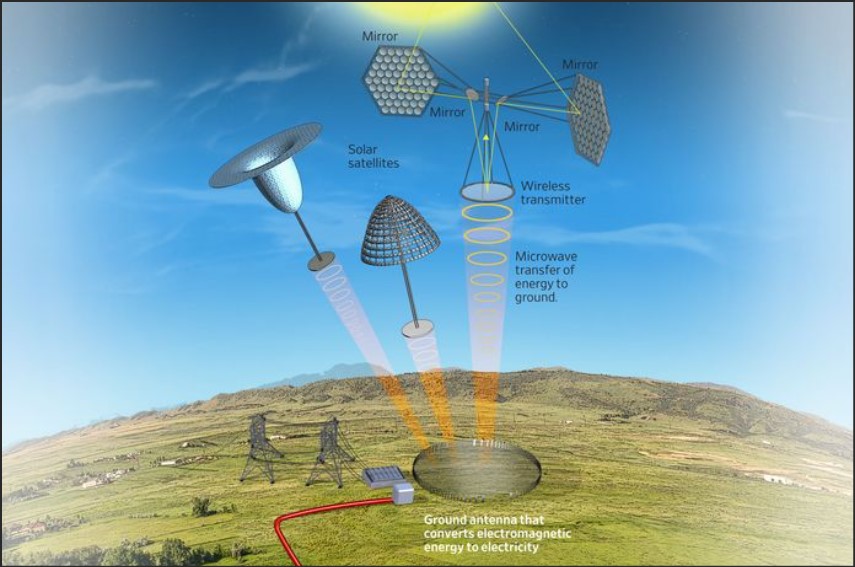
Some scientists and engineers say that solar energy could be captured in space and beamed to Earth as microwaves or laser beams within the next ten years, reports the Wall Street Journal in a special feature, “The Next Bets for Renewable Energy.”
“The basics are to put a large, very large platform in space, harvest sunlight, where the sun shines, essentially 99.95% of the time, and send it to markets on the ground, where, on average, the sun is shining only about 15% of the time,” says former NASA scientist John Mankins, president of Mankins Space Technology, a company working on developing a 1-mile-wide solar power satellite prototype that will use microwave beaming.
The U.S. Naval Research Laboratory has already tested the feasibility of transferring energy using microwave transmission, sending 1.6 kilowatts a distance of more than 0.6 miles. Japanese engineers have sent a comparable amount of energy the length of a football field. Meanwhile, the California Institute of Technology plans to test prototypes that can transfer power by means of a steerable microwave beam by the end of 2022.
The United Kingdom’s Space Energy Initiative plans to spend a 500-megawatt prototype that uses microwave beaming into orbit within the next decade, and connect a satellite four times more powerful to the grid by 2035.
If these technologies prove to be economically competitive, they can form the basis of a massive space-based industry with maintenance and repair operations based on the Moon.
